Review: 2012 Volkswagen Passat 2.5 SE
Volkswagen intends to become the world’s largest auto maker. Selling far more cars in the United States would accomplish this goal. Euro-spec cars haven’t been doing the trick, as too few Americans have been willing to pay the resulting semi-premium prices. So VW engineered a new Jetta compact sedan and a new Passat midsize sedan specifically for American tastes and budgets. Confident of the latter’s success, they’ve even constructed an all-new factory in Chattanooga, TN, to assemble it. Should the UAW’s latest targets expect to be working overtime? Today’s review evaluates the 2.5-liter five-cylinder gas Passat in SE trim, while Wednesday’s will compare the 2.0-liter turbodiesel in SEL Premium trim.
Apparently VW felt they were biting off enough risk with the new plant and the much higher sales volume needed to justify it, for the new Passat’s exterior styling could not be more safe. From the side the big sedan resembles the first-generation Toyota Avalon, itself tailored to the most conservative slice of the American car market circa 1994. The front end, like that of the new Jetta, does without the sort of overstyled, oversized headlights and grilles that have been fashionable for the past half-decade. But it goes too far in the other direction, giving the otherwise handsome (in dark colors) exterior an overly generic, “value” face not unlike that of the 1997 Camry.
The new Passat’s interior styling is similarly conservative to a fault. The instrument panel upper and parts of the doors are soft to the touch, but because many of the other surfaces and controls are composed of decidedly lower-grade materials the overall ambiance reeks of cost cutting. The climate control knobs, though easy to understand, feel especially chintzy. As in other recent VWs, the beltline (base of the windows) is fashionably high. But the pillars are thin by current standards and the windshield is comfortably raked, so the driving position is good if not commanding. The seats don’t have much in the way of contour, and the typical American posterior will find them short on padding. Compared to recent VW practice, the power seat lacks two adjustments: no tilt and no height adjustment for the lumbar bulge. For some people none of this will matter, for the new Passat’s interior has one literally large competitive advantage: limo-worthy legroom. Headroom is also plentiful. If you’ve been having trouble finding a sufficiently roomy sedan, your search is over—unless you also want your rear passengers to be well-ventilated. Though dual zone automatic climate control is standard in all 2012 Passats, rear air vents aren’t available. There’s plenty of room for your stuff as well, as the truck is large and the rear seat folds to expand it. VW clearly thinks Americans care about quantity more than quality, even as Ford and Chevrolet make a big shift in the opposite direction.
The 200-horsepower 2.0-liter turbocharged four that powered the previous Passat costs too much for the new car’s lower price point. Instead, the 170-horspower five-cylinder engine initially created for the U.S.-market 2005.5 Jetta lurks beneath the hood of the Passat 2.5. While most definitely not the driving enthusiast’s choice (we want whatever Europe gets), the five excels at midrange torque and sounds more substantial than the typical four. Paired with a six-speed automatic it has no trouble getting the car off the line or accelerating up to highway speeds. It helps that the new 191.6-inch-long, 72.2-inch-wide sedan weighs only 3,220 pounds, over 100 fewer than the smaller, 188.2-by-71.7-inch 2006-2010 Passat. The new Audi A6, though only a little larger on the outside and less roomy on the inside, weighs nearly a quarter-ton more.
The trip computer reported mid-twenties in suburban driving and high 30s along a stretch of 70 MPH highway. Both numbers seem optimistic. The EPA ratings for the Passat 2.5 automatic: 22 city, 31 highway, same as the 2010 2.0T.
Stripping the Passat down to fighting weight also pays dividends for handling. The Passat 2.5 feels much smaller than it actually is. The chassis and especially the steering have a direct, honest feel lacking in today’s cars, with their relentless pursuit of Lexus. Feedback is plentiful and nuanced when it’s most needed, in curves. The steering is a little light on center, but progressively firms up as the wheel is turned (many current systems with too much new tech for their own good do the opposite). As a result, though the Passat 2.5’s limits are fairly low courtesy of unaggressive suspension tuning and 215/55HR17 ContiProContact tires, and front end could be better damped in bumpy curves, it’s easy and enjoyable to exploit every bit of the car’s potential.
Then, the flipside. Without the extensive use of budget-busting lightweight steel and aluminum, those missing pounds had to come out of the body structure and sound insulation. Perhaps for this reason, the new Passat sounds and feels insubstantial and unrefined compared to the emerging norm for the class. Mid-turn bumps elicited a clunk from the driver’s door. Even assuming a defect with the tested car, the body structure feels less than rigid across imperfect pavement. Build quality, noise levels, and refinement are those of a mid-pack car from a decade ago. Thought a modestly insulated driving experience was disappearing forever from the midsize sedan segment, for good and not so good? Think again. Slicker, quieter, more solid competitors sound and feel more expensive, a reversal of the situation when the 1998 Passat shook up the industry.
The 2012 Passat starts at an attention-getting $19,995—but the mandatory $770 destination charge bumps it well over the magic $20,000 mark. Opt for the $1,100 automatic transmission and the SE package (17-inch alloy wheels, heated leatherette power driver’s seat, leather-wrapped steering wheel, trip computer, satellite radio, and a few other niceties), and the sticker jumps to $25,595. No longer so attention-getting, but still $2,350 less than the 2010 Passat (there was no 2011). But the 2010 included more stuff, most notably a standard sunroof, foglights, and those no longer available power seat adjustments. Adjust for these using TrueDelta’s car price comparison tool and the MSRP difference shrinks to only $750. Compare invoices and the feature-adjusted difference is less than $200—VW has cut dealer margins. So VW isn’t giving much away here. They’ve increased the size of the car, but downgraded materials and removed content, resulting in a wash (at best). Even with its lower price, the 2012 Passat still lists for $3,390 more than a Hyundai Sonata GLS with Popular Equipment Package. Adjusting for feature differences cuts the difference to a still sizable $2,900. The Koreans are admittedly outliers. Other competitors tend to be within $1,500 of the Passat once feature differences are adjusted for.
Don’t care for upscale materials or insulation from the outside world? Just want a roomy car at a competitive price? Then VW has developed a Passat for you. But as much as I like to feel the road, the Passat sacrifices too much refinement in pursuit of a low price and a low curb weight. The best current cars suggest that, with finesse, it is possible to have both driver involvement and passenger comfort. The new Passat needs more such finesse. But, if strong sales of the new Jetta are any indication, it’ll sell well regardless.
Vehicle provided by Dan Kelley, Suburban VW in Farmington Hills, MI, 248-741-7903
Michael Karesh operates TrueDelta, an online source of car reliability and pricing information.
Michael Karesh lives in West Bloomfield, Michigan, with his wife and three children. In 2003 he received a Ph.D. from the University of Chicago. While in Chicago he worked at the National Opinion Research Center, a leader in the field of survey research. For his doctoral thesis, he spent a year-and-a-half inside an automaker studying how and how well it understood consumers when developing new products. While pursuing the degree he taught consumer behavior and product development at Oakland University. Since 1999, he has contributed auto reviews to Epinions, where he is currently one of two people in charge of the autos section. Since earning the degree he has continued to care for his children (school, gymnastics, tae-kwan-do...) and write reviews for Epinions and, more recently, The Truth About Cars while developing TrueDelta, a vehicle reliability and price comparison site.
More by Michael Karesh
Latest Car Reviews
Read moreLatest Product Reviews
Read moreRecent Comments
- Jalop1991 This is easy. The CX-5 is gawdawful uncomfortable.
- Aaron This is literally my junkyard for my 2001 Chevy Tracker, 1998 Volvo S70, and 2002 Toyota Camry. Glad you could visit!
- Lou_BC Let me see. Humans are fallible. They can be very greedy. Politicians sell to the highest bidder. What could go wrong?
- SPPPP Vibrant color 9 times out of 10 for me. There may be a few shapes that look just right in metallic gray, for example. There are a few nices ones out there. And I like VW "White Silver". But I'd usually prefer a deep red or a vibrant metallic green. Or a bright blue.
- 28-Cars-Later Say it ain't so, so reboot #6* isn't going to change anything?[list=1][*]V4-6-8 and High "Tech" 4100.[/*][*]Front wheel drive sooooo modern.[/*][*]NOrthSTARt.[/*][*]Catera wooooo.[/*][*]ATS all the things.[/*][*]We're *are* your daddy's Tesla. [/*][/list=1]



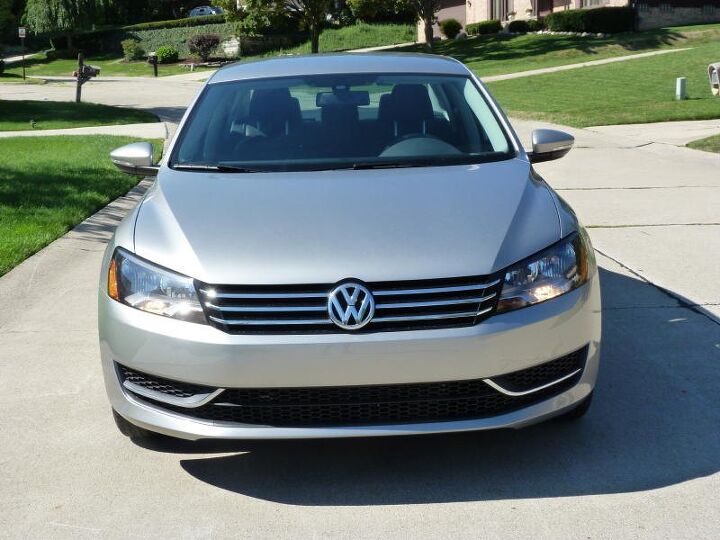
























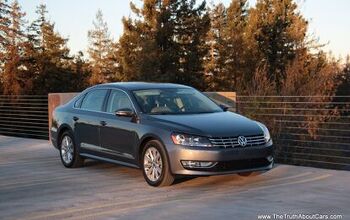
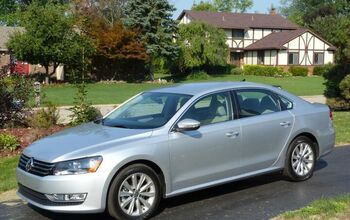
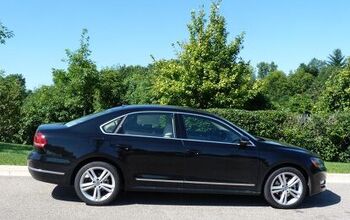
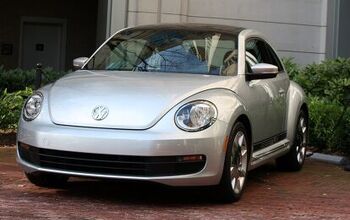
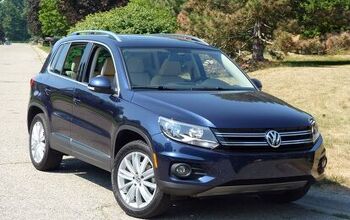










Comments
Join the conversation
Hello Dear, it give me a great pleasure to write you after viewing your profile Here at(www.thetruthaboutcars.com) which really interested me to have communication with you if you have desire with me. so that we can get to know each other. Remeber distance does not matter .but love matters allot in life and i will be very happy for you to write me through my email ID for more detail about me and i will sent you my picture and more detail (nancy22patric@live.com) yours lovely in love nancy PLEASE CONTACT ME WITH THIS(nancy22patric@live.com)
Test drove a 2.5 SE - excellent ride/handling balance, reasonable power with an interesting exhaust note, plenty of room front and rear. The V-Tex seats in the car I drove felt hard, but those in the showroom were much more comfortable, leading me to believe that the material has to "break in" over time. The only glaring omissions I saw were rear air vents and a ski pass-through (Jettas have the latter and Golfs have both - go figure).